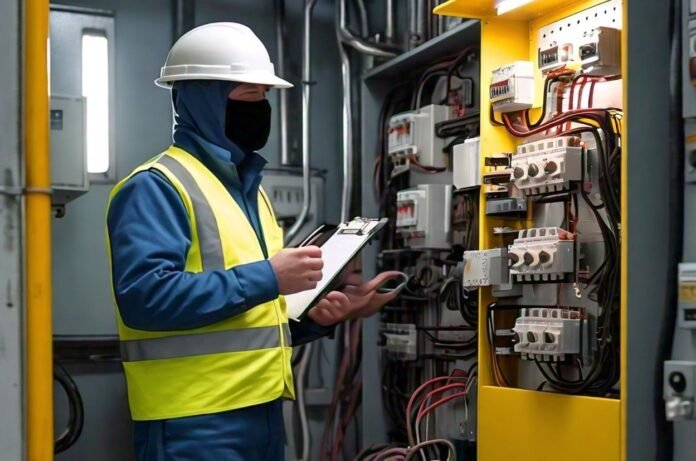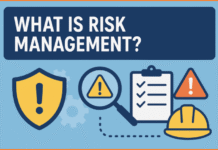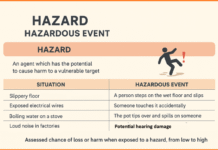Contents
Understanding Electrical Hazards
Electrical hazards are a critical concern, both in residential and workplace settings. According to the National Safety Council (NSC), electrical hazards primarily encompass electric shocks, burns, and fire risks. Understanding how these hazards occur can significantly reduce the chances of hazardous incidents, enhancing overall safety.
Electric shocks are a prevalent type of electrical hazard. They occur when a person comes into direct or indirect contact with an energized conductor or circuit part. Even minor electric shocks can result in injuries such as muscle spasms, burns, or even cardiac arrest. In workplaces, electric shocks often happen due to faulty wiring, improper grounding, or using electrical equipment in a wet environment. Residential settings are not immune; defective home appliances or deteriorated electrical cords can similarly pose significant risks.
Burns, another severe category of electrical hazards, can arise from arc flashes or direct contact with electrical energy. Arc flashes result from a high-powered discharge of electricity between conductors or from conductors to ground, producing intense heat, light, and pressure. Such incidents can cause third-degree burns, vision damage, and in extreme cases, be fatal. Fire risks linked to electrical hazards should not be underestimated. Faulty wiring, overloaded circuits, and defective electrical devices contribute to numerous house fires annually, as highlighted in NSC reports.
The statistics underscore the gravity of these hazards. According to recent data from the NSC, electrical failures contribute to an estimated 28,000 house fires every year in the United States, leading to hundreds of deaths and significant property damage. In occupational settings, electricians and construction workers face heightened risks, with electrical incidents accounting for approximately 5% of all occupational fatalities.
By comprehensively understanding these types of electrical hazards, both employers and homeowners can implement better safety practices. Installing ground fault circuit interrupters (GFCIs), regular inspection of electrical systems, and adhering to established electrical codes can mitigate these risks. The insights provided by the National Safety Council are instrumental in promoting an environment where electrical safety is a priority.
Preventive Measures and Best Practices
Electrical safety is paramount in both residential and industrial settings, and adhering to established preventive measures is essential for mitigating hazards. The National Safety Council (NSC) provides a comprehensive framework to help individuals and organizations maintain electrical safety and prevent accidents. A cornerstone of this framework is the proper installation and maintenance of electrical systems. Proper installation entails hiring certified professionals who follow stringent safety guidelines, ensuring that all wiring, components, and systems comply with local and national electrical codes. Regular maintenance of these systems helps identify and rectify potential issues before they escalate into significant hazards.
Another critical aspect emphasized by the NSC is the use of personal protective equipment (PPE). PPE such as insulated gloves, safety goggles, and protective clothing serves as a vital barrier between electrical workers and the inherent dangers posed by electrical currents. Ensuring the correct and consistent use of PPE can significantly reduce the risk of injuries, safeguarding the personnel involved in electrical tasks.
Regular safety inspections are also deemed indispensable. Periodic evaluations of electrical systems by qualified professionals can uncover latent faults and vulnerabilities that could lead to accidents. These inspections should include a thorough examination of electrical panels, wiring integrity, grounding systems, and circuit breakers. Implementing a systematic inspection routine helps maintain ongoing compliance with safety standards and addresses potential problem areas proactively.
Adhering to these preventive measures is not just a regulatory requirement but a proactive approach to maintaining a safe environment. The significance of following these best practices cannot be overstated, as they directly contribute to preventing electrical accidents and protecting lives. By integrating these recommended practices, individuals and organizations can effectively minimize electrical risks, fostering a safer, more secure operational environment.
Emergency Response and First Aid
In the unfortunate event of an electrical emergency, immediate and effective response is paramount to ensure the safety and well-being of those involved. First and foremost, it is crucial to assess the situation without putting yourself in danger. If safe to do so, disconnect the power source before attending to the injured person. This step is critical in preventing further harm and ensuring a controlled environment for first aid administration.
When dealing with someone who has sustained an electric shock or burn, prompt action can make a significant difference. Begin by checking the victim for responsiveness and breathing. If the individual is unresponsive, call for emergency medical services immediately and start cardiopulmonary resuscitation (CPR) if trained to do so. For electric burns, it is essential to cool the burn area with running water for at least 10 minutes but avoid using ice as it can aggravate the injury. Cover the burn with a clean, non-stick dress with an injury, it is best to refrain from touching or attempting to move them, as electrical shocks can lead to spinal injuries or severe muscle contractions.
Having an emergency action plan is indispensable for ensuring swift and coordinated responses to electrical incidents. This plan should include details on how to disconnect power supplies, contact emergency services, and provide immediate first aid. Regular drills and training sessions can familiarize individuals with these procedures, enhancing their ability to react calmly and effectively under pressure.
Moreover, it is advisable for both households and workplaces to equip themselves with basic first aid kits that include supplies specifically for electrical injuries, such as sterile dressings and burn treatments. Educating all individuals on the proper use of these supplies and fostering a culture of safety can significantly mitigate the risks associated with electrical emergencies.
Creating a Culture of Safety
Fostering a culture of safety, whether at home or in the workplace, is imperative for ensuring effective electrical safety measures. A safety-conscious environment is built upon the foundation of continuous education and training, which are vital tools in mitigating risks associated with electrical hazards. Organizations must prioritize regular safety training sessions to keep employees informed about the latest electrical safety protocols and best practices. This ongoing education helps to reinforce the importance of electrical safety, ensuring that it remains a key focus area across all levels of operation.
Equally important is the role of safety councils and organizations in promoting electrical safety awareness. Entities such as the National Safety Council (NSC) are instrumental in developing guidelines, resources, and training programs dedicated to preventing electrical accidents. By participating in these programs, individuals and businesses can stay up-to-date with new regulations and emerging hazards, thereby enhancing their safety strategies.
Community initiatives are another pivotal aspect of cultivating a safety-oriented mindset. Local community groups and safety campaigns provide an excellent platform for disseminating crucial information on electrical safety. These initiatives often offer workshops, seminars, and informational materials that are accessible to a broader audience, helping to raise awareness and educate the public effectively. Moreover, collaborative efforts between community initiatives and professional safety organizations can lead to more comprehensive and impactful safety campaigns.
Ultimately, the commitment to fostering a culture of safety should be unwavering. This entails a proactive approach to learning, the implementation of robust safety protocols, and engagement with both organizational and community-driven safety programs. By prioritizing these steps, individuals and organizations can significantly reduce the risk of electrical incidents, ensuring a safer environment for everyone involved.





